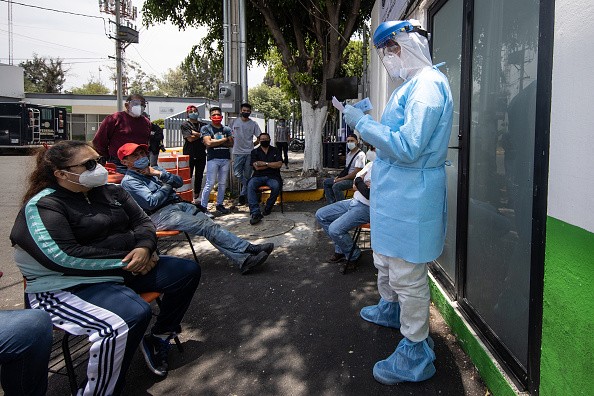COVID-19 Cases in Latin America Surpasses 4 Million
More than four million people in Latin America have now tested positive for coronavirus disease 2019 (COVID-19). As of Wednesday, the total number of coronavirus cases reported in the region has risen to 4,040,925 with 172,886 deaths.

According to Reuters, Brazil registered 67,860 additional cases on Wednesday, and the neighboring country Argentina has an additional 5,782 confirmed cases. Brazil alone has so far registered 2,227,514 million cases and 82,771 deaths, the second-most affected country after the United States.
Peru has the second-highest number of cases in Latin America behind Brazil. On Wednesday, 3,688 have been added to its uncounted people to its death toll, taking fatalities to nearly 17,500. Chile reported 4,463 new cases for the day, giving a total of 366,550 cases and has doubled the number at the start of June.
Aside from Peru and Chile, Mexico is also on the list of top 10 countries with over 300,000 total cases each.
According to AFP, the total number of deaths in Mexico has surged to become the fourth-highest in the world, at 40,400. On Sunday, Mexico also surpassed Italy and now has more victims than anywhere except the United States, Britain, and Brazil.
Meanwhile, Argentina announced on Wednesday a daily record of 5,782 confirmed cases, the vast majority of them in and around the capital Buenos Aires, taking the total number infected in the country to 141,900.
According to AFP, many Latin American countries have started implementing stay-at-home measures. However, the coronavirus is still spreading fast across much of the region.
Despite widely implemented strategies to combat the outbreak, the high numbers point to the struggles of nations across the region. The coronavirus has already infected more than 15 million people globally, and it killed 625,000 since it emerged in China last year.
Latin America Struggles to Contain the Pandemic
The number of infected people tremendously rising, and the flattening of the curve seems to be a long way off, as reported by DW. Latin America continues to fight against the novel coronavirus, especially now that the number of infected people passed four million.
Latin America has the second-highest mortality rate in relation to COVID-19. The government revealed serious shortcomings despite early and drastic restrictions. According to DW, four out of ten worst-affected countries worldwide are from Latin America.
Not yet at the peak
According to BBC news, daily reported deaths in the region of Latin America remained high, though, in most countries in Europe, it has dropped. Compared with the three of the worst-hit countries in Europe - the UK, France, and Italy - there is a difference in the trends against Brazil, Mexico, and Peru.
Dr.Carissa Etienne, head of the Pan American Health Organization, warned that COVID-19 is spreading exponentially in many areas of Latin America. The number of deaths in Latin America's countries has been doubling every three to four weeks.
Researchers noted that both deaths and cases may be under-reported like a study by the University of Sao Paulo Medical School, which estimated that the number of infections in Brazil can rise to six times higher than the official figure.
Must read:
US Signs $2 Billion Contract With COVID-19 Vaccine Makers to Reserve 100 Million Doses For Americans
How Deadly Is COVID-19? Researchers May Have Finally Found An Answer
Here are the Results of Some COVID-19 Vaccines After Human Clinical Trials
Subscribe to Latin Post!
Sign up for our free newsletter for the Latest coverage!

















